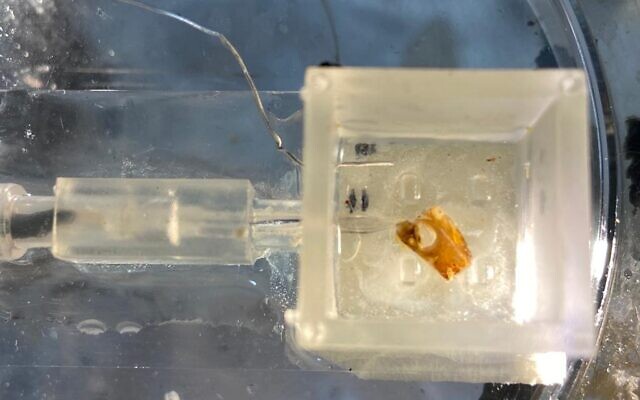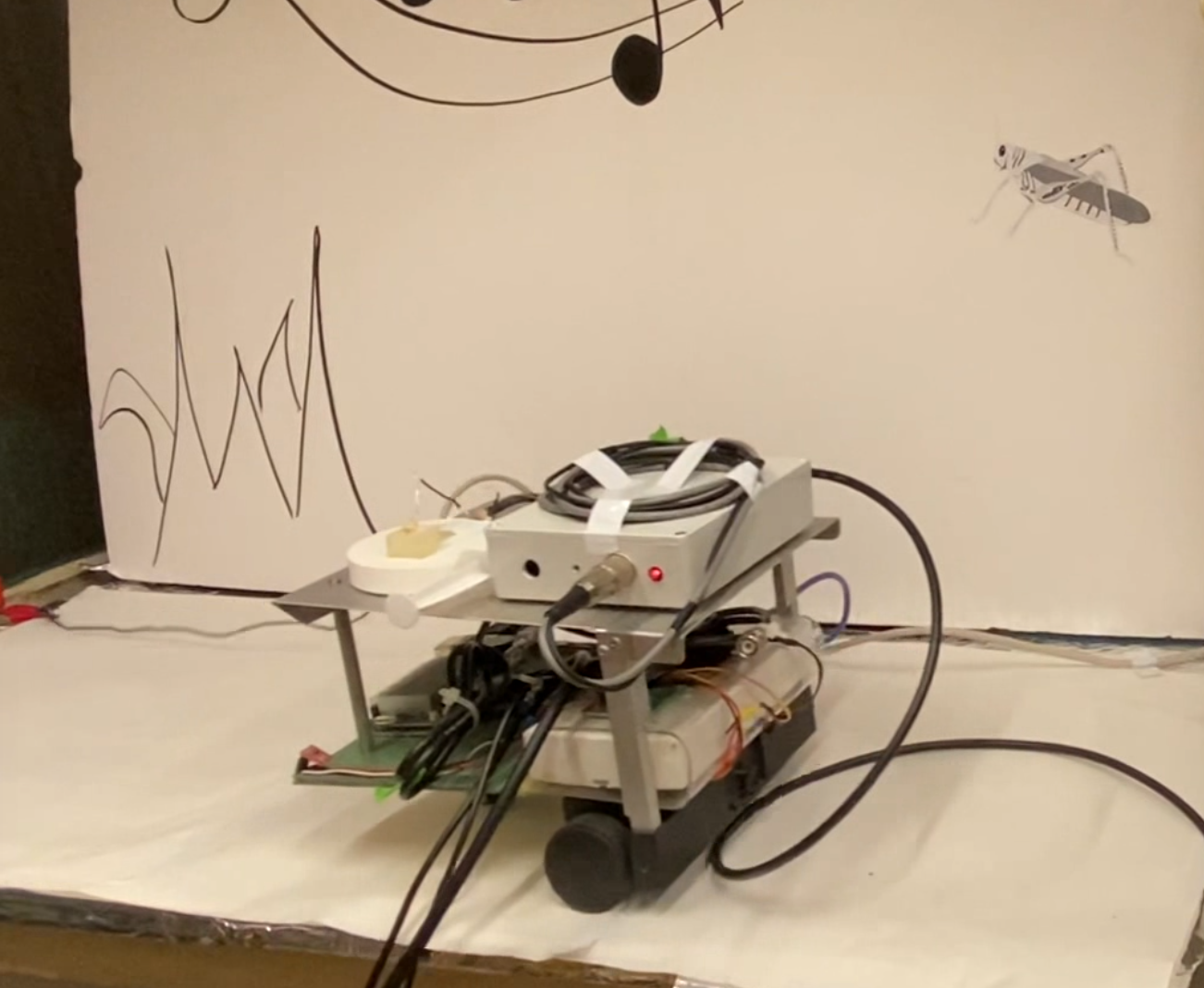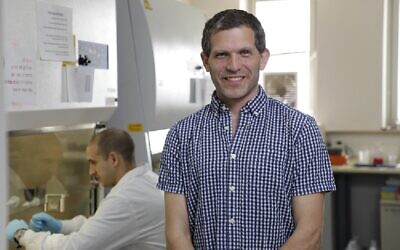Many insects see and hear better than any camera or microphone; that’s why a bug-eyed Tel Aviv team is connecting insect parts to circuits and says this’ll be tomorrow’s tech

Israeli scientists have successfully wired a locust ear into a robot, and say the breakthrough could pave the way for animal parts to become the microphones and cameras of the future.
The robot at Tel Aviv University “listens” to sounds around it using the ear of a dead locust. Upon hearing one clap it moves forward; upon hearing two claps in quick succession it moves backward.
Researchers behind the breakthrough say it is the first time a sense organ has been integrated into electronics, and therefore a “proof of concept” that shows that the full sensory capacity of animal parts — noses, eyes, ears and touch sensors — can be harnessed and information they gather fed to machines.
“We decided to use an ear to demonstrate what we can do, but the big deal is the general principle that we can use animal sensory systems for robotic platforms,” Ben Maoz, one of the scholars behind the invention, told The Times of Israel.
He commented: “We’re showing that it’s possible to take the animal kingdom’s power for sensing, which is much greater than any invention humans have built, and integrate it into our technology.”
This is “very exciting,” he said, suggesting that insects like mosquitos, which are in plentiful supply and the use of which doesn’t tend to evoke strong ethical objections, will be the best source of body parts.
“Insects are amazing, if you think about it,” he said. “They are super small and energy efficient but have remarkable detection and sensory capabilities.”
The team behind the breakthrough, Maoz, Idan Fishel, Prof. Yossi Yovel and Prof. Amir Ayali, published a paper detailing their achievement in the peer-reviewed journal Sensors.

Until now, scientists have experienced some success using skin and muscle tissue in machines, but not sense organs, Maoz said.

He believes that “the sky is the limit,” as animals have abilities unrivaled by even the most developed technological sensors. “For example, some animals have amazing abilities to detect explosives or drugs, and the creation of a robot with a biological nose could help us preserve human life and identify criminals in a way that is not possible today,” he commented.
“Some animals know how to detect diseases. Others can sense earthquakes. We can start to integrate some of these abilities into tech.”
To develop the locust-ear tech the researchers built a robot capable of responding to signals it receives from the environment, found a way to artificially keep the dead locust ear alive, and developed a way to communicate signals received by the locust’s ear to the robot.
Maoz said that the potential for using animal parts is so great that it may reduce the need to carry on developing increasingly advanced electronic sectors.
“It may make much more cumbersome and expensive developments in the field of robotics redundant,” he said.
As reported by The Times of Israel
